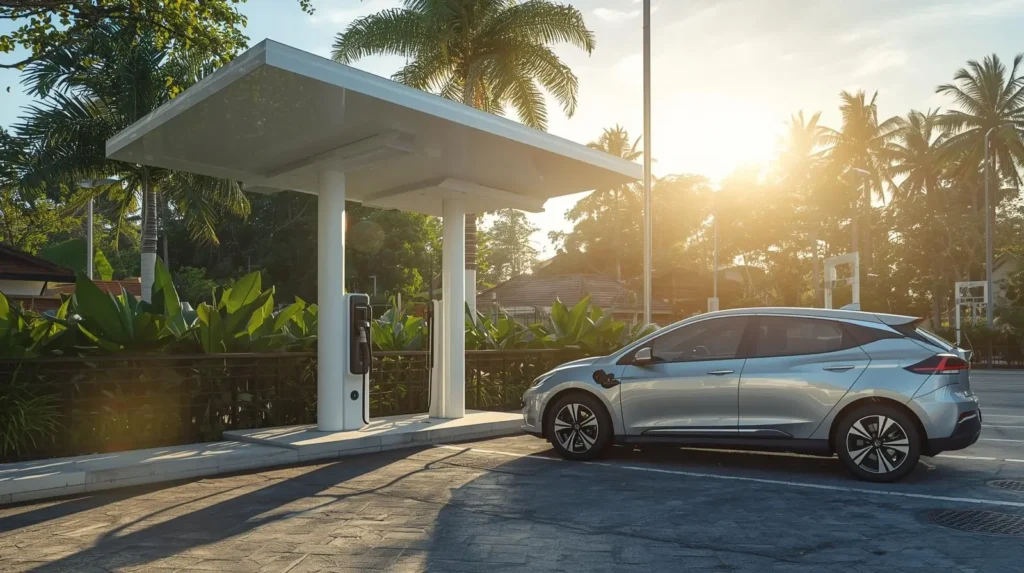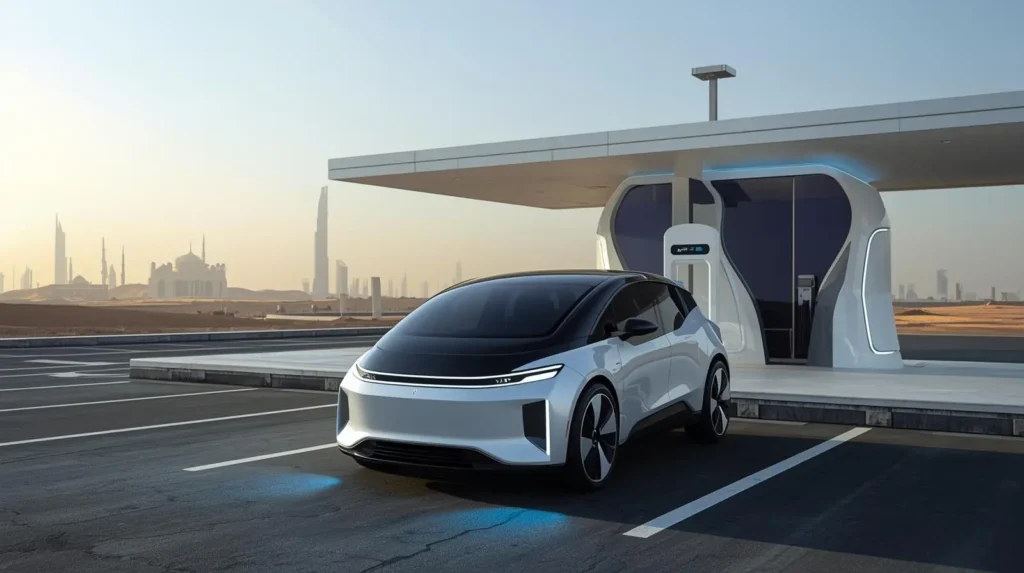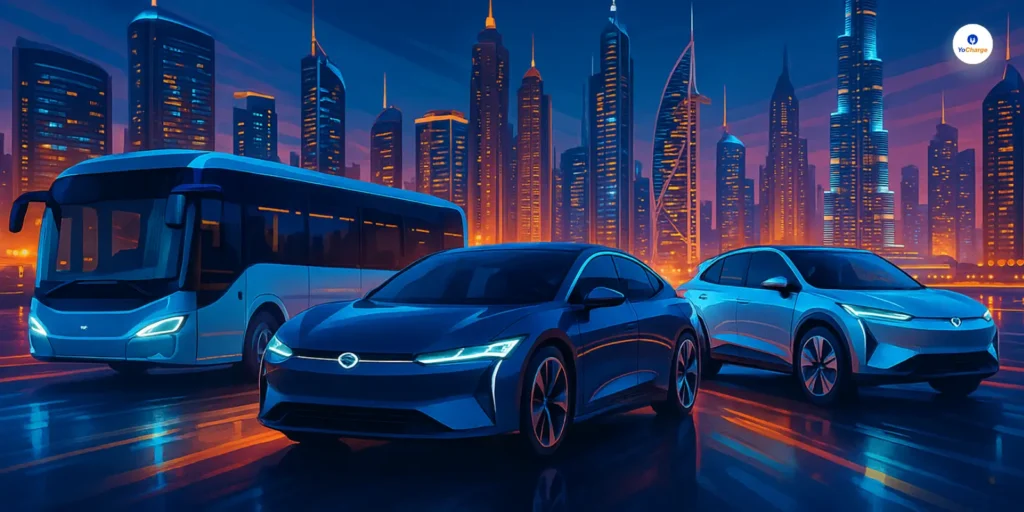
The Bureau of Indian Standards (BIS) has recently rolled out standards for EV chargers, which aim to enhance the usability, safety, and interoperability of electric vehicle (EV) charging infrastructure in India. This article identifies and describes the standard notified by BIS & Ministry of Power in Guidelines for Installation and Operation of Electric Vehicle Charging Infrastructure-2024.
What is BIS ?
Bureau of Indian Standards (BIS) is a member of the International Electrotechnical Commission (IEC), which is the global body that is developing reference standards to ensure interoperability and minimize trade barriers for electric vehicles and their components. While Indian standards for electric vehicle charging are compliant with global standards, local climate considerations and the difference in vehicle types available in the country necessitate modifications that are specifically applicable to India.
BIS Standards for EV Chargers in India
| Power Level | Type of EV Charger | EV Charger Capacity | Charging Device / Protocol | EV-EVSE Communication | Charge Point Plug / Socket | Vehicle Inlet / Connector |
|---|---|---|---|---|---|---|
| Level I | Light EV AC Charge Point (for 2W, 3W, 4W – M1 Category) | Up to 7 kW | IS-17017-22-1 | Bluetooth Low Energy | IS-60309 | IS-17017-2-7, IS-17017-2-2 |
| Level I | Light EV DC Charge Point (for 2W, 3W Category) | Up to 12 kW | IS-17017-25 [CAN] | IS-17017-25 [CAN] | IS-17017-2-6 | IS-17017-2-6 |
| Level I | Light EV AC/DC Combo (for 2W, 3W) | Up to 7 kW (AC) or 12 kW (DC) | IS-17017-31 | IS-17017-31 | IS-17017-2-7 | IS-17017-2-7 |
| Level II | Parkbay AC Charge Point (for 3W and 4W – M1 Category) | Normal Power ~11kW/22 kW | IS-17017-1 | IS-15118 [PLC] | IS-17017-2-2 | IS-17017-2-2 |
| Level III | DC Charging Protocol (for 4W – M1 Category), Buses and Trucks (M3 Category) | DC 50 kW to 250 kW | IS-17017-23 | IS-17017-24 [CAN], IS-15118 [PLC] | IS-17017-2-3 | IS-17017-2-3 |
| Level IV | DC High Power for e-Bus and Trucks Charging Station (M3 Category) | DC High Power (250 kW to 500 kW) | IS-17017-23 | IS-17017-24 [CAN], IS-15118 [PLC] | IS-17017-2-3 | IS-17017-2-3 |
This table captures the different power levels, EV charger types, capacities, and the corresponding communication and connector standards.
BIS Standards for EV Charging in India:
A. IS 17017
IS 17017 is the key electric vehicle charging standard in India comprising three parts and six sections. The standard covers various aspects of EV charging, ensuring compatibility, safety, and efficiency across different EVs and charging equipment.
Key Elements of IS 17017:
- Categories and Power Levels: IS 17017 defines four power levels based on the type of EVs and the power requirements of their chargers:
- Power Level 1: Low-power chargers primarily used for two-wheelers (2W), three-wheelers (3W), and small four-wheelers (M1 category).
- Power Level 2: Medium-power AC chargers used for larger EVs, including light four-wheelers and other vehicles in the M1 category.
- Power Level 3: High-power DC chargers, typically for larger vehicles, including buses and trucks (M3 category), with power outputs ranging from 50 kW to 250 kW.
- Power Level 4: Ultra-high-power DC chargers, primarily for electric buses and trucks, with power outputs exceeding 250 kW and going up to 500 kW.
- Charger Types and Capacities: IS 17017 outlines specific capacities for chargers, both in terms of alternating current (AC) and direct current (DC) charging. These include:
- Up to 7 kW for light EV AC chargers (Power Level 1).
- Up to 12 kW for light EV DC chargers (Power Level 1).
- Up to 22 kW for park bay AC chargers, which are commonly used for 4W vehicles (Power Level 2).
- DC charging from 50 kW to 500 kW, tailored for larger vehicles such as buses and trucks (Power Levels 3 and 4).
- Communication Protocols: IS 17017 includes provisions for communication between the EV and the Electric Vehicle Supply Equipment (EVSE) to ensure safe and efficient charging. It highlights different communication protocols such as:
- Bluetooth Low Energy for low-power chargers.
- CAN Bus and Power Line Communication (PLC) for higher-power chargers (DC).
- Charging Plugs and Connectors: The standard also specifies the types of charge point plugs and sockets based on power levels and charger types:
- IS-60309 for low-power AC chargers.
- IS-17017-2-6 for DC charging points.
- IS-17017-2-7 for combined AC/DC chargers.
- These plugs and connectors are designed to meet international safety and compatibility standards, ensuring interoperability across different EVs.
- Safety and Interoperability: IS 17017 ensures that charging stations meet international safety standards while being adaptable to various EVs available in the Indian market. The goal is to promote interoperability, where EV drivers can use any charging station regardless of their vehicle’s manufacturer.
- Made-in-India Technology: The development of IS 17017 aligns with India’s Make-in-India initiative, promoting local manufacturing of EV charging infrastructure while adhering to global standards. This helps in reducing dependency on imports and creates a robust domestic ecosystem for EV charging technology.
B. IS 15118
IS-15118 refers to the Indian adaptation of ISO 15118, an international standard that governs the communication between electric vehicles (EVs) and charging stations, specifically for Vehicle-to-Grid (V2G) communication and Plug & Charge technologies. It plays a key role in the seamless interaction between EVs and Electric Vehicle Supply Equipment (EVSE), focusing on ensuring secure and efficient data exchange during the charging process.
Key Features of IS-15118:
- Vehicle-to-Grid (V2G) Communication:
- One of the primary focuses of IS-15118 is enabling bi-directional communication between the electric vehicle and the grid. This allows the Vehicle-to-Grid (V2G) technology, where EVs not only charge from the grid but can also feed electricity back to the grid during periods of high demand, turning EVs into energy storage units.
- V2G helps in grid stabilization and encourages better energy management, especially as the adoption of renewable energy sources increases.
- Plug & Charge:
- IS-15118 facilitates Plug & Charge functionality, where drivers can simply plug their EV into a compatible charging station, and the system automatically handles authentication and payment. This eliminates the need for RFID cards, mobile apps, or external payment methods, making the process simpler and more user-friendly.
- The Plug & Charge feature uses digital certificates to authenticate the EV, ensuring secure transactions between the EV and the charging station.
- Communication Protocol:
- IS-15118 utilizes Power Line Communication (PLC) as its primary protocol for data transfer between the vehicle and the charging station. This enables the exchange of critical information such as charging status, power requirements, grid conditions, and other parameters necessary for efficient charging.
- Secure Communication: The standard emphasizes cybersecurity by incorporating encrypted communication to ensure that transactions and data transfers are safe from unauthorized access, mitigating the risks of cyberattacks on the charging infrastructure.
- Interoperability:
- IS-15118 supports interoperability, meaning it allows different types and brands of EVs to communicate with different charging stations regardless of their manufacturer. This is critical for scaling the EV charging infrastructure across various regions and reducing the risk of incompatibility.
- This makes it easier for EV users to roam between charging stations without worrying about compatibility issues.
- Dynamic Load Management:
- The standard enables dynamic load management, which allows charging stations to adjust the charging power based on the grid’s current load or the specific needs of the vehicle. For example, during peak hours, the system can throttle the charging rate to avoid overloading the grid.
- This functionality helps optimize energy usage and can potentially lower charging costs for users during non-peak hours.
- Future-Proofing EV Infrastructure:
- IS-15118 prepares EVs and charging stations for the future, especially with the anticipated integration of renewable energy sources. As renewable energy becomes more prevalent in the grid, V2G technology will help stabilize supply by storing excess renewable energy in EV batteries and feeding it back into the grid when needed.
- This standard ensures that both AC and DC charging processes can be accommodated in a secure, scalable way, keeping infrastructure adaptable to future needs.
Components of IS-15118:
- Physical Layer: Describes the physical means (e.g., cables, plugs) by which data is transmitted using Power Line Communication (PLC).
- Data Link Layer: Manages how data packets are formatted and transmitted between the EV and the charging station.
- Transport and Session Layers: Ensures that data is transmitted reliably between the charging station and the EV, handling issues like packet loss.
- Application Layer: Focuses on higher-level communication, such as sending EV charging profiles, managing payments, and negotiating charging parameters (charging speed, start/stop conditions, etc.).
Use Cases Enabled by IS-15118:
- Automated Payment Processing: EV owners can charge their vehicles without needing to swipe cards or open apps, as the authentication is handled automatically via the EV itself.
- Smart Charging: The system can adjust the charging rate based on real-time grid conditions, user preferences (e.g., cost, speed), or renewable energy availability.
- Energy Feedback to the Grid: In V2G systems, electric vehicles can act as energy storage devices that send power back to the grid, which is especially valuable for grid balancing during peak hours.
- Fleet Charging: For fleets of electric vehicles, IS-15118 enables intelligent scheduling and management, allowing the vehicles to charge in a coordinated manner to maximize efficiency and reduce electricity costs.
Indian Standards for Electrotechnology in Mobility 2024
Read Also
Conclusion
IS 17017 and IS 15118 together form the foundation of India’s electric vehicle (EV) charging ecosystem, ensuring a safe, interoperable, and future-ready infrastructure. By harmonizing hardware (IS 17017) and communication (IS 15118), India is creating a robust, user-friendly, and sustainable EV charging ecosystem that supports mass EV adoption and integrates with the evolving energy grid.



